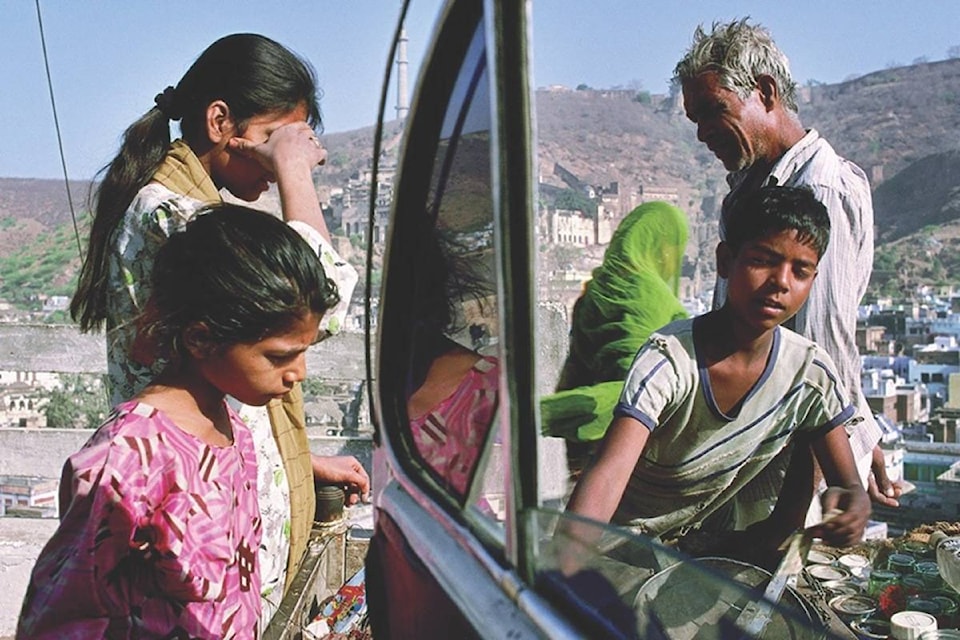TORONTO — A woman who has accused the late street photographer Raghubir Singh of rape is expressing concern about how a .MeToo-inspired display for the Royal Ontario Museum will handle her painful past with the celebrated artist.
New York-based artist Jaishri Abichandani says negotiations are ongoing over how her story will be portrayed as one element of “.MeToo & the Arts,” an overview of gender inequity set to run alongside the exhibit, “Modernism on the Ganges: Raghubir Singh Photographs.”
Abichandani says a draft she saw Thursday describes her experience as “sexual harassment.” She’s calling on the museum to use the word “rape” and to include a photograph of her at a performance art/protest she staged last year at the Met Breuer in New York.
Press material for the ROM event also describes the allegation as “sexual harassment.”
Abichandani says the ROM initially suggested a photo of the protest that features a man in the foreground, instead of one she requested in which she is prominent.
“I found that to be kind of absurd (because) this movement is really about women,” Abichandani said Thursday by phone from Brooklyn.
“Yes, there are male survivors but the reality is the scale of violence towards women is just incomparable and this is about centring the voices of women of colour who have been subject to this violence…. You can’t have it both ways. You can’t use my story to make yourself look good and then actually misrepresent me and make me invisible, that’s just not acceptable to me.”
In a followup message, Abichandani said she would still support the display if the two sides cannot agree on wording.
The ROM’s South Asian Art curator Deepali Dewan said Thursday that “conversations are ongoing” with Abichandani.
“We are still actively working on the display and continue to engage in discussions about the content details,” Dewan said in an emailed statement.
Abichandani first revealed the allegations in a radio interview last October. Her claims have not been tested in court. Singh died in 1999.
In an interview Wednesday, Dewan said the display would include a “head-on” reference to Abichandani’s allegations against Singh, as well as a broad look at sexual harassment in the arts.
“It’s difficult because there’s pain on all sides and we wanted to make sure we proceed in a respectful way,” said Dewan, who noted the display also includes input from Singh’s family, who provided the photographs for the exhibit.
The ROM also formed an external advisory committee made up of leaders in the arts community and women’s advocacy.
Abichandani said she’s pleased with much of what the museum has done: “What response the ROM has given me has been the best of any institution so far.” She also described Dewan as “open and receptive.”
But she expressed disappointment over being denied several requests: that the .MeToo display include a video of her protest, a photo of a sign made for the protest and a 25-centimetre long sculpture that she made.
She says Singh coerced her into sex during what she thought was a work trip to India when she was 25 and he was 52.
“It’s rape. I’m not just out there protesting him putting his hand on my thigh. It was an instance of him completely entrapping me and isolating me in a country and basically refusing to hear my verbal refusal and coercing me into the situation which I just felt like I had to survive,” says Abichandani, now 48.
“And he followed that up with an entire year or two, I can’t remember the length of it, of verbal abuse and intimidation once we got back to New York. All of that to me is not encapsulated by the words ‘sexual harassment.”’
Singh is considered a pioneer for his use of colour film to capture street scenes in India from the late 1960s to the 1990s.
In the earlier interview, Dewan called the .MeToo display a “milestone” in the way the museum handles difficult content, suggesting this could be the new norm for problematic projects.
The .MeToo program will include video clips of arts professionals reflecting on gender issues. There will also be films, panel discussions and possibly live performances.
Both displays run July 21 to Oct. 21.
